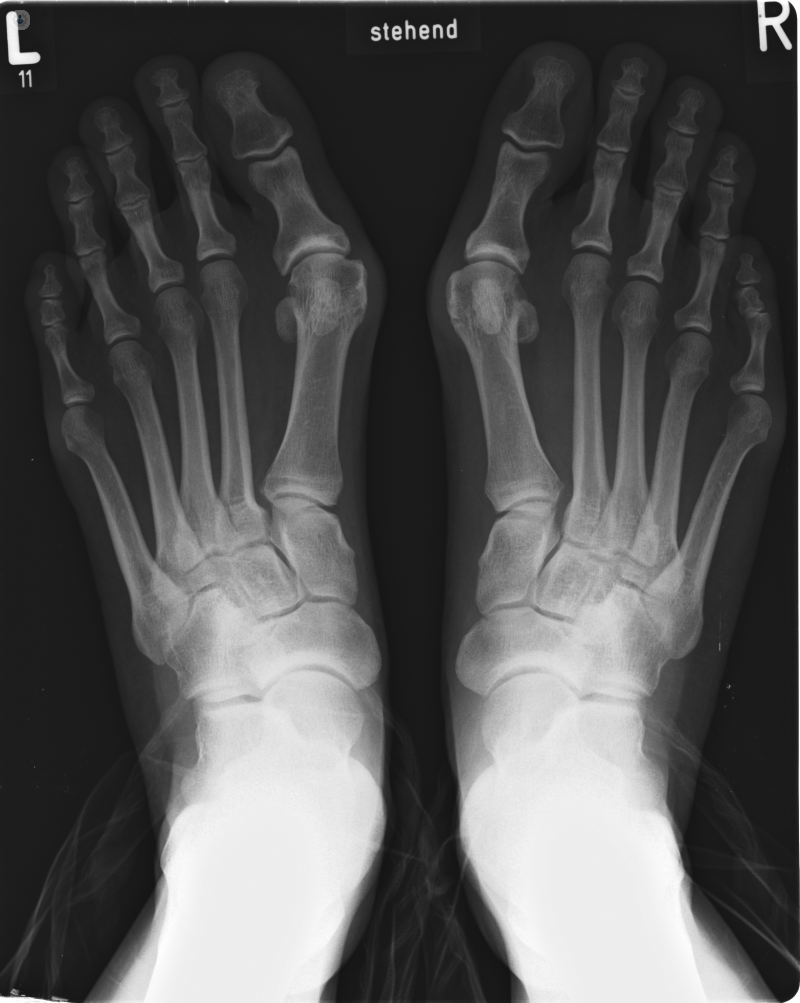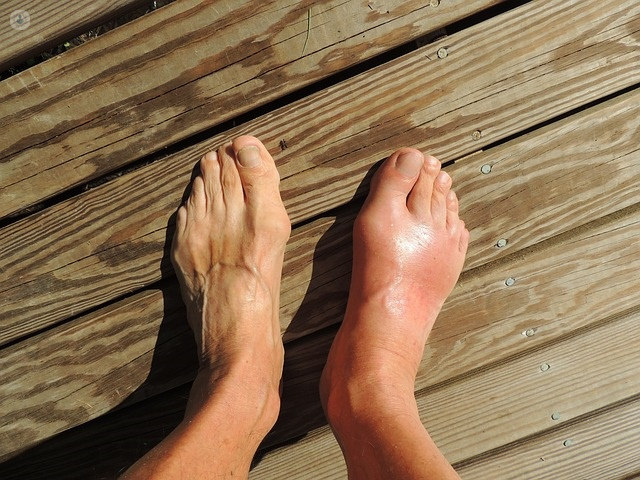Hallux valgus, a.k.a. the bunion - ask an expert!
Written by:Bunions, also known as hallux valgus, are a very common condition that may require surgical treatment. It is important to diagnose bunions and lesser toe abnormalities accurately and manage them with the expertise of a doctor. For the best outcome, it is essential to combine modern techniques with an approach catered specifically to the patient. Orthopaedic consultant and bunion expert Mr Paul Hamilton explains:

What is a bunion?
A bunion is a term for when the “knuckle bone” of the big toe protrudes as a prominent bump on the inside of the foot. It is often associated with rubbing, and frequently becomes inflamed.
Who gets a bunion?
It is known that bunions are genetic, and occur more frequently in women than men. Wearing poorly-fitting shoes is often thought to be the cause, but current medical opinion is that, while it contributes to rubbing and exacerbates pain and other symptoms, it is probably not the root of the problem.
Can you prevent a bunion?
Unfortunately, bunions are largely unavoidable, as we cannot accurately predict who will develop one. However, it is a good idea to wear comfortable, wide fitting shoes to help reduce rubbing and in doing so prevent symptoms and pain from a bunion.
What is the treatment for bunions?
When the bunion first begins to manifest, wide-fitting shoes can be sufficient to manage hallux valgus comfortably, as can bunion protectors, toe spaces and bunion splints. While these techniques are good at managing the symptoms, they are unlikely to cure the hallux valgus.
Bunion surgery is an option: the 1st metatarsal bone has to be cut precisely and fixed with a screw. The most successful and easily reproducible current technique is called the ‘scarf” osteotomy, which boasts around a 90% rate of success.

Is bunion surgery extremely painful?
Some pain is to be expected, but unlike the past, when bunion surgery did not fix the bone (thus causing significant pain), modern bunion surgery employs the use of anaesthetic, which dulls the pain during the operation. Painkillers are usually recommended post-surgery for a few days.
Are there any conditions associated with bunions that may require treatment?
Your surgeon should check for associated problems like metatarsalgia (pain in the ball of the foot), lesser toe abnormalities, and calf contracture or tightness. The presence of these conditions could mean that further treatment is needed, such as physiotherapy, insoles, and perhaps even another surgical procedure after the initial bunion surgery.
What can be expected from bunion surgery?
Bunion surgery is usually performed as a day case. In normal circumstances, the patient is put under general anaesthesia. For two weeks after the operation, the patient should keep the foot elevated, and they are given a special shoe and dressing or splint, which is used for a six-week period, after which the patient can return to normal activity. However, full recovery of the area around the hallux may take several months.


